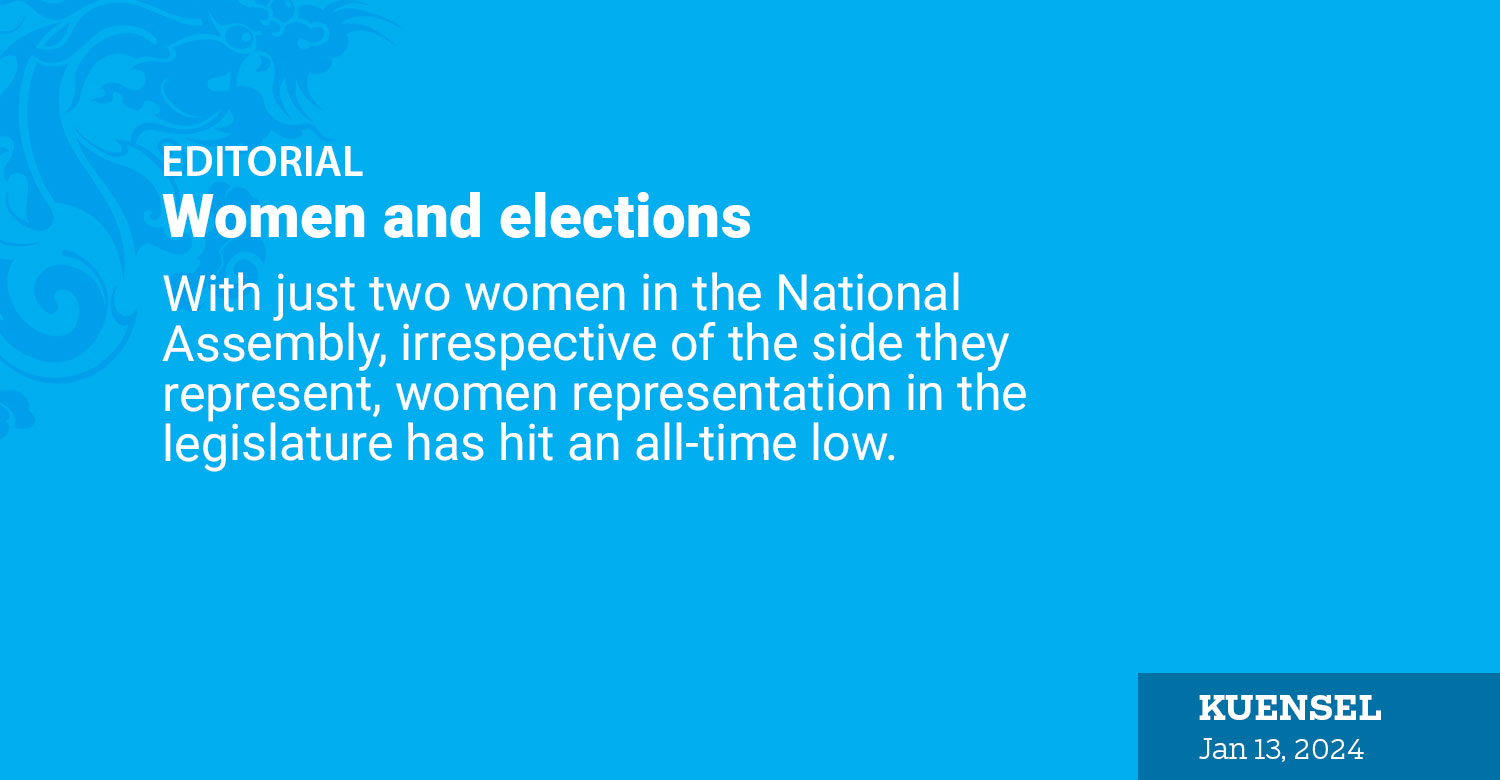With just two women in the National Assembly, irrespective of the side they represent, women representation in the legislature has hit an all-time low.
Bhutanese women’s disappearing presence in the National Assembly of Bhutan was articulated by the 9 January 2024 general election where only two women candidates, one each from the two contesting political parties – People’s Democratic Party and Bhutan Tendrel Party, were elected.
With 23 women participating in the National Assembly elections, the number of women candidates had increased compared to past elections. However, given that there were five political parties this time, women’s participation rate per party already saw a decline. The percentage of women candidates was 10.1 percent In 2018. It dropped to 9.7 percent of the 235 candidates from 47 constituencies.
Bhutan ranked 131 out of 191 countries on the map of Women in Politics: 2023 developed by Inter-Parliamentary Union and UN Women. The data collected for up until 1 January 2023 present that globally women make up 26.5 percent of the parliament.
Whereas to achieve critical mass in order to influence change, there should be at least 30 percent representation, the percentage of Bhutanese women in the parliament has reached only 17 percent, and has been on a downward spiral ever since.
The local governance presented a similar picture – with just 2 women gups as compared to 203 male counterparts, and 24 women mangmis in the total 205 gewogs.
The unconscious biases towards considering women to participate in politics, win elections, and execute leadership positions – deterred Bhutanese women from participating in politics, say observers. The existing political system – the political campaigns, travelling, party meetings, and public forums – was male-dominated and not inclusive, keeping the women folks away from participating, except for a marginal token-representation. The political party’s decision to allocate a ticket or two to a single or exceptional women candidate only amplified the case in point.
However, world over, women’s representation in politics was about 26 percent, below the critical mass baseline of 30 percent to be successful in influencing decision-making. And according to experts, the situation is expected to remain so in the foreseeable future as social behavioural change and social construct took time for morphosis and effect change.
For the present, and for short-term gains, instituting ‘temporary special measures’ in the form of quota to have sufficient women representation could plug the gap and make politics more inclusive. However, the measure also carried an unappreciated view for those who came through it, whereas some who benefitted from it took it as a right. Then there was also the dilemma on when to lift or do away with the quota system.
But there is a growing consensus among the stakeholders promoting increased or equal participation of women in politics, that as more women take up politics as a career choice and profession, confidence of the public will increase leading to a lasting positive change in the perception and attitude of the public on women in politics.
The irony in our elections is that there are always more female voters turning up to vote than male voters. In the recently concluded election, except for Samtse and Tsirang, there were more female voters than male voters in the 18 dzongkhags.


